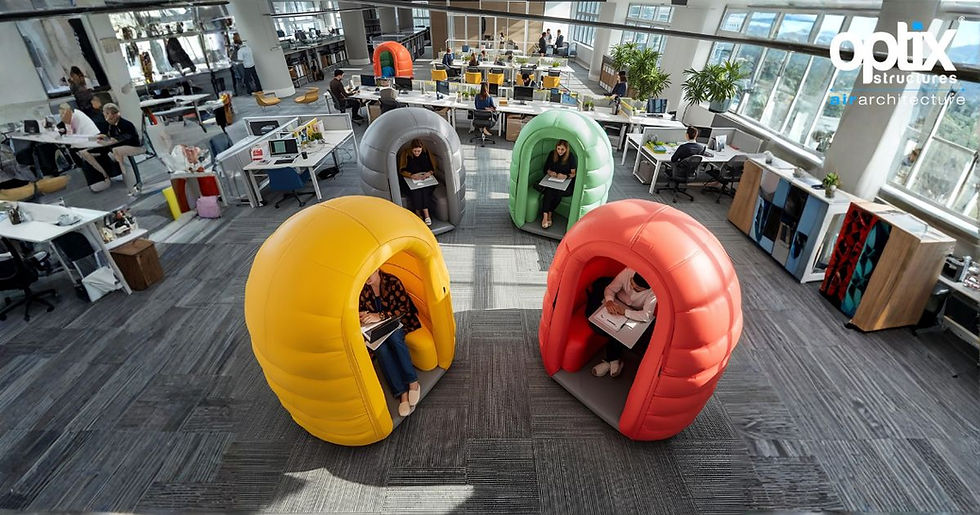How do inflatable structures work?
- Alex Ford

- Apr 9, 2020
- 3 min read
Updated: May 19, 2023
How do inflatable structures work?
There are many types of inflatable structure, from advertising sky dancers that promote a company’s brand, to domed inflatables that can house any activity within the dual membrane system. The design and production process remains constant throughout, it has not changed since the inception of inflatable structures with only technology enhancing and improving efficiency and quality.

The majority of inflatable structures are made up of an air cavity wall and roof. The structure is inflated and supported by a constant supply of air which is drawn from an integral fan with constant power. The air is drawn in from outside of the structure with a centrifugal fan. The fan sits in line with the structure and produces the airflow and pressure needed to lift the inflatable pod, cube or dome. The structure is made out of segments or panels which are sewn together with stitching and seams. These seams allow the structure to not over inflate as they continually leak through the hundreds of thousands of stitching holes created through the sewing. Internal ribs or straps allow the structure to form the shape of the structure. There are 2 membranes to an inflatable structure, an inner and an outer, the outer membrane surface is exposed to the outdoor or exterior environment and the inner membrane surface is exposed to the activity and people inside the structure. Air passed between these two membranes or air cavity walls and roof then escapes through the extremely small holes of the sewing or stitching. The air loss through the permeability of the material itself is limited by the addition of a PU (polyurethane) coating on the reverse of the material. Without this coated backing, the structure would not withhold enough air pressure to inflate and keep the structure inflated.

We call this method of inflatable structure design and production - airflow, just like that of a bouncy castle.
Bouncy castle are made with a heavier grade material, usually heavyweight PVC for larger pieces of a polyester called Oxford cloth for home use products that can be bought online or at supermarkets and stores. The same principle applies, the air is generated by a usually high powered fan or blower and is circulated into a structure with 2 membranes. These membranes then form a shape with internal ribs or straps to form a shape.
Components of an inflatable structure:
Main material, flame retardant, strength tested and inherent rip stop properties nylon
A heaver material for harder wearing areas such as areas that are in contact with the ground, usually a PVC
Internal ribs or straps that help make the shape, usually made out of similar nylon or polyester.
Stitching or sewing thread. This has to be heavy-duty to cope with the pressure from the inflation
Zips, for areas to access the inside of the structure and for additional extras such as doors
Velcro to act as a fastening mechanism and additional strength to areas like deflation zips and doors.
Manufacturing process of an inflatable structure:
Design structure
Test and model in a computer simulator for structural integrity and calculations
Engineer seam allowances
Plot out, cut panels and component parts
Sew panels together with any additional detail
Test with inflation equipment.
When adding printing to inflatable structures, we would print the material before plotting and cutting of material. The printed material would then be joined together by a seamstress.

The inflatable structures shape is designed in a 3D drawing software package. Patterns are then made by collapsing the 3D design into 2D segments or panels and then a seam tolerance is added.
The panels or pieces of the inflatable are then plot and cut out on a large plotter or cutting machine. This all used to be done by hand using traced templates and scissors, nowadays this process can be automated using 2D line drawings that are sent to a machine using CAD files.
The seams are then sewn together by seamstress hand and sewing machine. All of our structures are hand made and finished to ensure best quality and consistent production techniques.









Comments